 Happy Birthday!
Happy Birthday!
Here’s a news item that probably slipped through the mesh, as it was quite low-key: Google is now 7 years old! This came as a bit of a shock to me in a way, and it probably will to you too: Nowadays, I would find it impossible to live and work as I do without Google. In fact, this one corporation has a pretty good monpoly on my life. I use Google on my mobile to find anything from street directions to the meaning of the word “vehement”. I get my email from them, and of course I use it to browse the Internet. It’s hard for me to imagine, then, that seven years ago, people managed to survive without Google.
 I found a screenshot of what Google used to look like on the Internet archive, and although it does obviously look a little old-school, it’s still much the same interface-wise as it is today:
I found a screenshot of what Google used to look like on the Internet archive, and although it does obviously look a little old-school, it’s still much the same interface-wise as it is today:
That was at a time when Google was still hosted on the Stanford University servers and had a staff of two. All I can say is that they’ve come a long way.
For me, this is a reminder that I am a part of the generation that has grown up at the same time as consumer technology: The children of tomorrow will grow up taking things like Google and the Internet for granted, and will never be able to experience a world without technology, and so will never fully appreciate it. I personally don’t think that technology will continue to evolve as fast as it has done so far, simply because I don’t think that there is anywhere for it to go. Off the top of my head, there isn’t anything that I can think of that I would really like, but can’t have, because it’s simply not technically possible. Still, time will tell, and I suppose in 70 years time I will be the one saying to a group of grandchildren while they mock me: “In my day, we had to look through books to find what we wanted you know!”
There’s a fascinating history of Google available on their corporate history page here.
 It’s in Space, it’s got to be cool. Oh, actually, no nukes, so forget it
It’s in Space, it’s got to be cool. Oh, actually, no nukes, so forget it
In a development reminiscent of the movie Deep Impact”, scientists have revealed a few ideas about what to do in case of an imminent asteroid impact. Their ideas just aren’t as cool as those in the movie though in my opinion: I mean, come on, you need a few nukes in there to make it look cool! Ah well, never mind, I just hope that in case of there being any danger of an impact, the scientists responsible will find some way of saving us. There have, afterall, been a fair few objects that have come close in history, and the dinosaurs can surely (or rather not) testify that sometimes, these things do actually hit Earth.
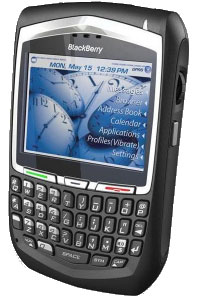 “Batman’s Blackberry”, but I still want one!
“Batman’s Blackberry”, but I still want one!
The story on the new Blackberry 8700, due to be released “in the neighborhood of December of this year or very early 2006,” hit this week. Having previously reviewed a Blackberry 7100v, I am very keen to have a play with the new phone. Apparently, it sports a 312mhz processor, which will hopefully make the browser a viable option for browsing anything but the most minimal of Web pages. We shall see, now all I have to do is get my hands on one ;-)
Admittedly, the styling does remind one of a phone tailor-made for Batman, but then it’s kinda cool anyway, and the screen looks like it’s going to be great! The screens on the 7100 and the 7200 were already some of the best seen on mobile phones, and so I have high hopes for the 8700. I bet Robin’s already got one, lucky sod! The rest of us will have to wait until December.
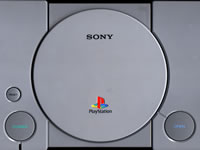 Sony’s Playstation has been awarded an Emmy for Outstanding Achievement in Technology and Advanced New Media for pioneering the 3D polygonal-based gaming experience, by the US National Academy of Television Arts and Sciences (NATAS).
Sony’s Playstation has been awarded an Emmy for Outstanding Achievement in Technology and Advanced New Media for pioneering the 3D polygonal-based gaming experience, by the US National Academy of Television Arts and Sciences (NATAS).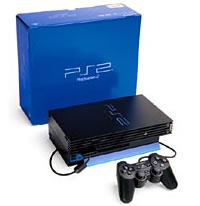 You can imagine that the awarding of this will make steam come out of the ears of those on the Xbox team at Microsoft
You can imagine that the awarding of this will make steam come out of the ears of those on the Xbox team at Microsoft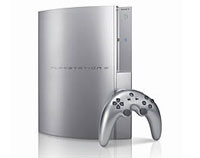 Is it only the cynical that would think that the timing of this award has anything to do with the wider entertainment business (read film) getting more closely involved with creation of film license games? Or even that they’ve finally woken up to the fact that the amount of money spent on video games out-sizes that spent on film.
Is it only the cynical that would think that the timing of this award has anything to do with the wider entertainment business (read film) getting more closely involved with creation of film license games? Or even that they’ve finally woken up to the fact that the amount of money spent on video games out-sizes that spent on film. Industry experts at the inaugural mobile TV show in London today couldn’t agree on the best way forward for this emerging technology.
Industry experts at the inaugural mobile TV show in London today couldn’t agree on the best way forward for this emerging technology.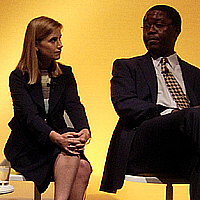 Hyacinth Nwana, (pictured left) speaking for Arqiva, and Jeremy Wright of Enpocket, both saw advertiser funded content – whether programming or entertaining video ‘spots’ – to be the key driver.
Hyacinth Nwana, (pictured left) speaking for Arqiva, and Jeremy Wright of Enpocket, both saw advertiser funded content – whether programming or entertaining video ‘spots’ – to be the key driver. Eirik Solheim of Finnish state broadcaster NRK, (pictured right) said their mobile TV trials had seen some success with pay-per-view.
Eirik Solheim of Finnish state broadcaster NRK, (pictured right) said their mobile TV trials had seen some success with pay-per-view. Earlier this month Samsung got a lot of attention when they
Earlier this month Samsung got a lot of attention when they  The UK production and development community is in danger of losing out to competition from overseas if it doesn’t wake up to the potential of mobile TV, said Mark Selby, Nokia’s Global Vice President for Multimedia, (pictured right) at the inaugural Mobile TV forum in London today.
The UK production and development community is in danger of losing out to competition from overseas if it doesn’t wake up to the potential of mobile TV, said Mark Selby, Nokia’s Global Vice President for Multimedia, (pictured right) at the inaugural Mobile TV forum in London today. But many claimed that the lack of spectrum is holding DVB-H back in the UK.
But many claimed that the lack of spectrum is holding DVB-H back in the UK. Digital One owns the UK’s only nationwide commercial DAB multiplex – but the capacity allocated for DMB is minimal.
Digital One owns the UK’s only nationwide commercial DAB multiplex – but the capacity allocated for DMB is minimal.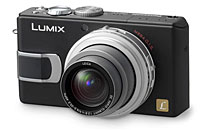 Bibs were hastily donned to soak up the undignified rivers of drooling dribble that appeared in the office when Panasonic first announced the latest addition to their high quality Lumix digital camera range, the LX1, back in July.
Bibs were hastily donned to soak up the undignified rivers of drooling dribble that appeared in the office when Panasonic first announced the latest addition to their high quality Lumix digital camera range, the LX1, back in July. The camera can also shoot in 3:2 and the more conventional 4:3 aspect ratio, with a switch on the lens barrel making it easy to switch to the format best suited for the composition on a shot-by-shot basis.
The camera can also shoot in 3:2 and the more conventional 4:3 aspect ratio, with a switch on the lens barrel making it easy to switch to the format best suited for the composition on a shot-by-shot basis. It’s no mean feat to fit an effective stabilisation system into a 4.2 by 2.2 by 1.4 inches camera, and users should find it an invaluable feature for low light photography – small cameras can be notoriously hard to hold steady at slow shutter speeds.
It’s no mean feat to fit an effective stabilisation system into a 4.2 by 2.2 by 1.4 inches camera, and users should find it an invaluable feature for low light photography – small cameras can be notoriously hard to hold steady at slow shutter speeds.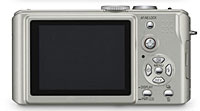 Sensitivity can be set to ISO 80, 100, 200, or 400, with the built in pop-up flash offering coverage up to 13.1 feet in wide-angle mode and 7.5 feet at the telephoto position.
Sensitivity can be set to ISO 80, 100, 200, or 400, with the built in pop-up flash offering coverage up to 13.1 feet in wide-angle mode and 7.5 feet at the telephoto position.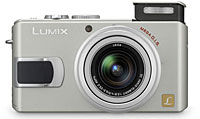 The Leica lens can focus down to two inches in macro modem with focus switchable from spot to single-point, three-point, or nine-point autofocus zones.
The Leica lens can focus down to two inches in macro modem with focus switchable from spot to single-point, three-point, or nine-point autofocus zones.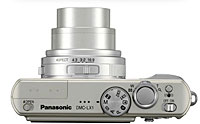 In shooting mode, this presents a wealth of optional information including a handy alignment grid dividing the screen into vertical and horizontal thirds.
In shooting mode, this presents a wealth of optional information including a handy alignment grid dividing the screen into vertical and horizontal thirds. Skype has today announced a new version of their Windows release of Skype.For the first time, several more functions are added to make Skype both a more serious communication tool, and at the same time, more frivolous.First the serious side. v1.4, which has been in beta since August, includes call forwarding for when you aren’t sitting by your computer, or if you’re a little more advanced, you’ve dropped out of WiFi range on your handheld version. If Skype finds you unreachable, you can set it to forward your calls to up to three landlines, or mobiles. The forwarding for the person initiating the call is free, with the Skype user paying for the privilege from their SkypeOut minutes.We see the Real Excitement is around the ability to forward calls from one Skype ID to another, giving the ability to have more than one Skype ID. Until now this had to be handled by all sorts of complexity of running two versions, separate from each other. Calls forwarded to another Skype ID are free.What the significance of the whole of Call Forwarding? Your SkypeIn number, or Skype ID becomes your first point of contact, something we’ve seen before with Unified Messaging (UM). UM didn’t set the world alight when it came to techy attention 2-3 years ago, but Skype has timed this perfectly, realising that people are now ready.
Skype has today announced a new version of their Windows release of Skype.For the first time, several more functions are added to make Skype both a more serious communication tool, and at the same time, more frivolous.First the serious side. v1.4, which has been in beta since August, includes call forwarding for when you aren’t sitting by your computer, or if you’re a little more advanced, you’ve dropped out of WiFi range on your handheld version. If Skype finds you unreachable, you can set it to forward your calls to up to three landlines, or mobiles. The forwarding for the person initiating the call is free, with the Skype user paying for the privilege from their SkypeOut minutes.We see the Real Excitement is around the ability to forward calls from one Skype ID to another, giving the ability to have more than one Skype ID. Until now this had to be handled by all sorts of complexity of running two versions, separate from each other. Calls forwarded to another Skype ID are free.What the significance of the whole of Call Forwarding? Your SkypeIn number, or Skype ID becomes your first point of contact, something we’ve seen before with Unified Messaging (UM). UM didn’t set the world alight when it came to techy attention 2-3 years ago, but Skype has timed this perfectly, realising that people are now ready. Personalisation
Personalisation SanDisk have unveiled their “fingernail-sized” new TrustedFlash cards, a technology that embeds Digital Rights Management (DRM) and decryption technology into memory cards, and also includes a subscription manager enabling the cards to be used for digital subscription music services.
SanDisk have unveiled their “fingernail-sized” new TrustedFlash cards, a technology that embeds Digital Rights Management (DRM) and decryption technology into memory cards, and also includes a subscription manager enabling the cards to be used for digital subscription music services. Harar stated that the TrustedFlash card would act like current SD cards, with the technology able to be extend into on-demand content such as feature films and online games.
Harar stated that the TrustedFlash card would act like current SD cards, with the technology able to be extend into on-demand content such as feature films and online games. BT will roll out IPTV in ‘late summer 2006’, according to Andrew Burke, CEO, BT Entertainment, (pictured right) speaking at the Enhanced TV Show in London today.
BT will roll out IPTV in ‘late summer 2006’, according to Andrew Burke, CEO, BT Entertainment, (pictured right) speaking at the Enhanced TV Show in London today. Elena Branet, Senior Marketing Manager at Microsoft TV, (pictured left) said IPTV would allow viewers to use picture in picture channel surfing, see caller ID on their TV sets, or watch TV while messaging a virtual community of friends and family. She said that basic IPTV would be possible with a minimum connection speed of just 1.5 MB.
Elena Branet, Senior Marketing Manager at Microsoft TV, (pictured left) said IPTV would allow viewers to use picture in picture channel surfing, see caller ID on their TV sets, or watch TV while messaging a virtual community of friends and family. She said that basic IPTV would be possible with a minimum connection speed of just 1.5 MB. Also at the show, David Bainbridge, MD of Yes, Yoo Media, (pictured right) said trials of a new product, ‘Broadband TV’ would start on ntl in October. Not to be confused with IPTV, this is a solution to help content creators repurpose content across platforms – working with cable TV, IPTV and 3.
Also at the show, David Bainbridge, MD of Yes, Yoo Media, (pictured right) said trials of a new product, ‘Broadband TV’ would start on ntl in October. Not to be confused with IPTV, this is a solution to help content creators repurpose content across platforms – working with cable TV, IPTV and 3. Motorola have offered more details about their forthcoming 3G RAZR V3x slim flip phone.
Motorola have offered more details about their forthcoming 3G RAZR V3x slim flip phone.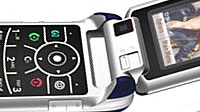 The onboard Bluetooth chip supports wireless stereo sound through Motorola’s Bluetooth Stereo headphones and other compatible hands free wotsits, with up to 512 MB of removable optional TransFlash memory.
The onboard Bluetooth chip supports wireless stereo sound through Motorola’s Bluetooth Stereo headphones and other compatible hands free wotsits, with up to 512 MB of removable optional TransFlash memory.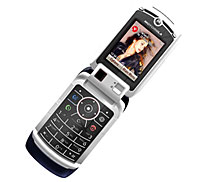 Motorola have also included an advanced speaker-independent voice recognition which lets users state a number/name and be connected without all that pre-recording palaver.
Motorola have also included an advanced speaker-independent voice recognition which lets users state a number/name and be connected without all that pre-recording palaver.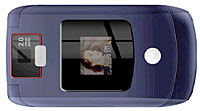 Meanwhile, as Motorola’s phones scoff the pies, rival NEC has launched the
Meanwhile, as Motorola’s phones scoff the pies, rival NEC has launched the